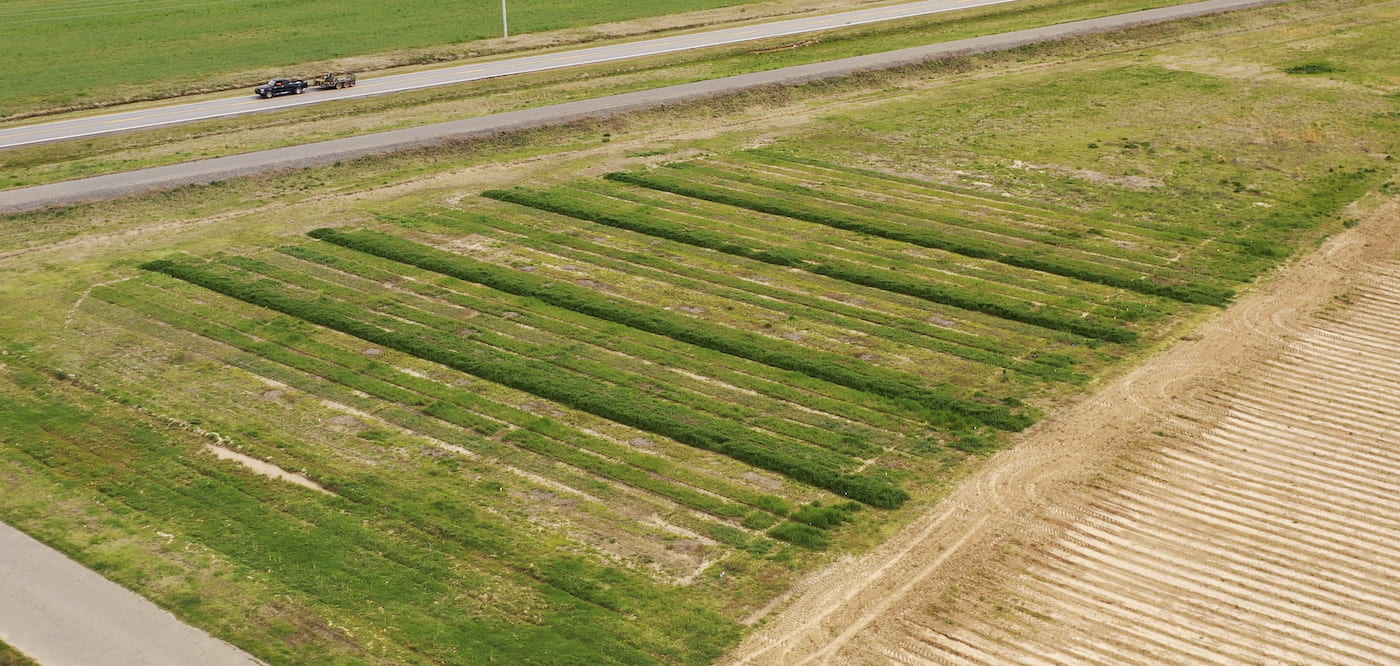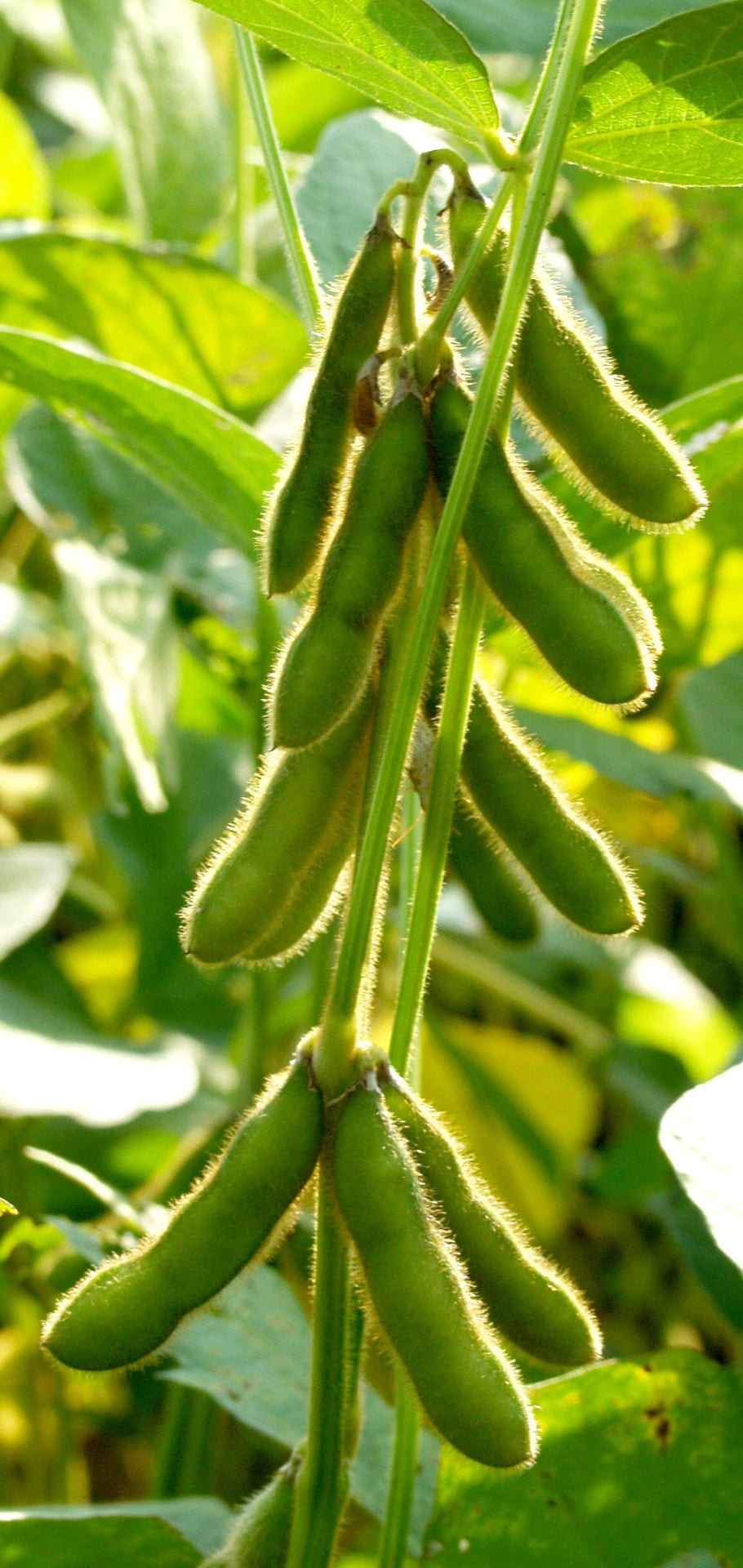Study Shows Cover Crops can Improve Yield in Soybeans

The Problem
Once just a rotation crop for cotton and corn, soybeans have become the state’s dominant cash crop, worth nearly $1.2 billion in 2019, according to the 2021 Arkansas Agriculture Profile (https://bit.ly/2021_ArkAgProfile). Soil erosion, water availability, and herbicide-resistant weeds are all significant issues that threaten the yield and profitability of Arkansas soybean producers.
Continuous cultivation can deplete soil health and productivity, limiting water retention, increasing erosion and input costs, lower crop yields, and increasing input costs. Long-term applications of the same herbicide mode of action can also create herbicide resistance and significantly limit weed control. Winter cover crops can address these issues by building biomass, recycling nutrients from deeper soil, and suppressing weed growth. However, short- and long-term research is needed to identify cover crops’ best practices and benefits.
Trent Roberts, associate professor of soil fertility and testing for the Arkansas Agricultural Experiment Station and a soil specialist for the Cooperative Extension Service, said Arkansas soybean producers need local research to identify the best cover crops for their production systems.
“Just like cash crops, cover crop selection is very important and can have a profound impact on the cover crop performance and the following cash crop’s performance,” he said. Roberts is the holder of the Endowed Chair in Soil Fertility Research for the University of Arkansas System Division of Agriculture.

Soybean fields with the greatest yields in a three-year Arkansas Agricultural Experiment Station study were those grown after a no-till, chemically terminated cover crop. (U of A System Division of Ag photo)
The Work
The study compared soybeans grown in fields that had been fallow against those grown after wheat for grain in a double-crop system. Soybeans grown after various cover crops, including cereal rye, black-seeded oats, barley, and Austrian winter pea, were also included. Researchers also used a 50/50 blend of Austrian winter pea and black-seeded oats and a “soybean blend” that contained cereal rye, turnip, and crimson clover.
The cover crop study was conducted at three locations to evaluate the results against different environments and soils. Those locations included the Pine Tree Research Station near Colt in St. Francis County; the Vegetable Research Station near Kibler in Crawford County; and the Rohwer Research Station in Desha County.
The Results
The three-year study showed that a specific blend of cover crops can improve yield in soybeans by more than 10 percent.
The fields with the greatest soybean yields were those grown after the no-till, chemically terminated cover crop, with a three-year average of about 63 bushels per acre.
The best cover crop for soybeans was the 50/50 blend of Austrian winter pea and black-seeded oats and the “soybean blend,” Roberts noted. The fields that had been fallow with no cover crop produced about 57 bushels per acre.
Researchers measured numerical increases in soil health and soil organic matter in the no-till cover crop treatment. Roberts said the increases are not statistically significant, however. Still, cover crops improved soybean yields in the no-till fields.
Roberts emphasized that the cover crop production system works best alongside no-till practices.
“When we implement cover crops, we can only truly realize their full benefit to the production system when we also implement no-till practices at the same time,” Roberts said.
Although they are not seeing a statistically significant increase in soil health yet, Roberts said he and other researchers believe that continued implementation of cover crop practices will show significant increases or changes in soil health metrics over time.
The Value
These results provide Arkansas soybean producers with the tools to successfully implement cover crops into their soybean production systems. With added devices such as soil moisture sensors, they may also be able to reduce their irrigation frequency or volume. Successful implementation of cover crops will often improve the system’s efficiency. Increased efficiencies can typically increase yields, reduce input costs, or both, which makes the producer more money, Roberts said.
Using a partial-returns analysis, profitability ranged from about $490 per acre in the fallow system to a high of about $560 per acre. The soybeans followed a blend of Austrian winter pea and black-seeded oats.
Roberts said the thought of added seed cost and labor sometimes turns producers off of cover crops. But the study’s results indicate a possible savings of $30-60 per acre from the implementation of no-till production practices, which makes up for the cost of the cover crop seed and establishment.
Funding
The Arkansas Soybean Promotion Board funded this project in association with the Arkansas Agricultural Experiment Station, the research arm of the University of Arkansas System Division of Agriculture.
About the Researchers

Soybean fields with the greatest yields in a three-year Arkansas Agricultural Experiment Station study were those grown after a no-till, chemically terminated cover crop. (U of A System Division of Ag photo)

Trent Roberts
Associate professor of soil fertility and soil testing, extension soil specialist and Endowed Chair in Soil Fertility Research for the University of Arkansas System Division of Agriculture
Ph.D. – University of Arkansas (Soil Science)
M.S. – University of Arizona (Soil Science)
B.S. – Oklahoma State University (Plant Science)
Conducts research in soil fertility and plant nutrition, with an emphasis on developing new soil tests and plant analytical methods. Roberts investigates crop response to soil nutrients like nitrogen and potassium and investigates different production systems to help develop better management strategies for more efficient crop production.

